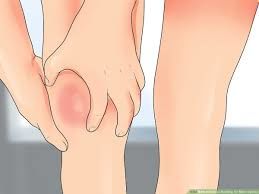Most people have experienced an injury at some point that has resulted in swelling around the affected area. Common areas of the body that are prone to swelling from injury include the ankles, feet, knees and wrists.
Why does swelling occur?
Swelling is an enlargement of a certain area of the body due to a build-up of fluid. However, swelling does NOT always occur in response to tissue injury. Swelling in the absence of an injury can be a sign of other things such as kidney or heart dysfunction, arthritis, rheumatic conditions or auto-immune disorders.
Inflammation occurs when there is an injury or infection and is often accompanied by swelling. Inflammation is part of the body’s natural healing process. The body sends an assortment of cells and proteins to the affected area to aid with healing and fighting off infections. Inflammation also causes an increase in blood flow and fluid to the area, which is why there is also swelling in the joint.
Let’s talk about injuries
After an injury, you’ve likely been told to put ice on the area to reduce swelling, following the RICE principle, or some variation of it. (Rest, Ice, Compression and Elevation)
What if I told you that ice doesn’t actually reduce swelling?
We have some good evidence in literature to suggest that ice actually doesn’t reduce swelling directly. The main effect of ice is to reduce tissue temperature and reduce nerve conduction velocity – a fancy way of saying that ice decreases the pain and sensitivity of the affected tissues. This will often help a patient to perform their exercises and mobilise that area, which has a secondary effect of reducing swelling.
As mentioned above, in the case of an acute injury, the body responds to tissue damage by causing an increase in blood flow and fluid to the affected area. This fluid is filled with inflammatory proteins and other important cells that are essential to tissue healing. Without inflammation and swelling, your tissues would not undergo the essential healing process after an acute injury. So, it’s not always the best option to religiously apply an ice pack to the affected area to “bring down the swelling”.
Lorimer Moseley, an expert in pain science, states that “Inflammation is a primitive form of defence that is essential to the tissue repair process. Think of the swelling, redness and pain after injury as a part of your own internal repair system and be grateful for it.”
When and how should I ice an injury?
- You should only really be icing an injury if you are unable to achieve enough pain relief with other mechanisms to be able to mobilise the joint
- If the swelling around the joint is causing a lot of compression, to the point that you are experiencing altered sensation or pins and needles in the area, it is best to do whatever possible to get the joint moving in order to reduce a bit of that fluid build-up à ice can help with this
- If and when applying ice, crushed ice is the best and fastest way to achieve a reduction in tissue temperature (as opposed to gel packs and frozen peas)
- The “20 on, 20 off” method is not always required; using crushed ice can achieve adequate cooling of the surface tissue (for pain relief) within about 5 minutes!
- However, a deeper injury or an area that has more fat tissue surrounding it will likely require more time under ice to achieve the desired effect

